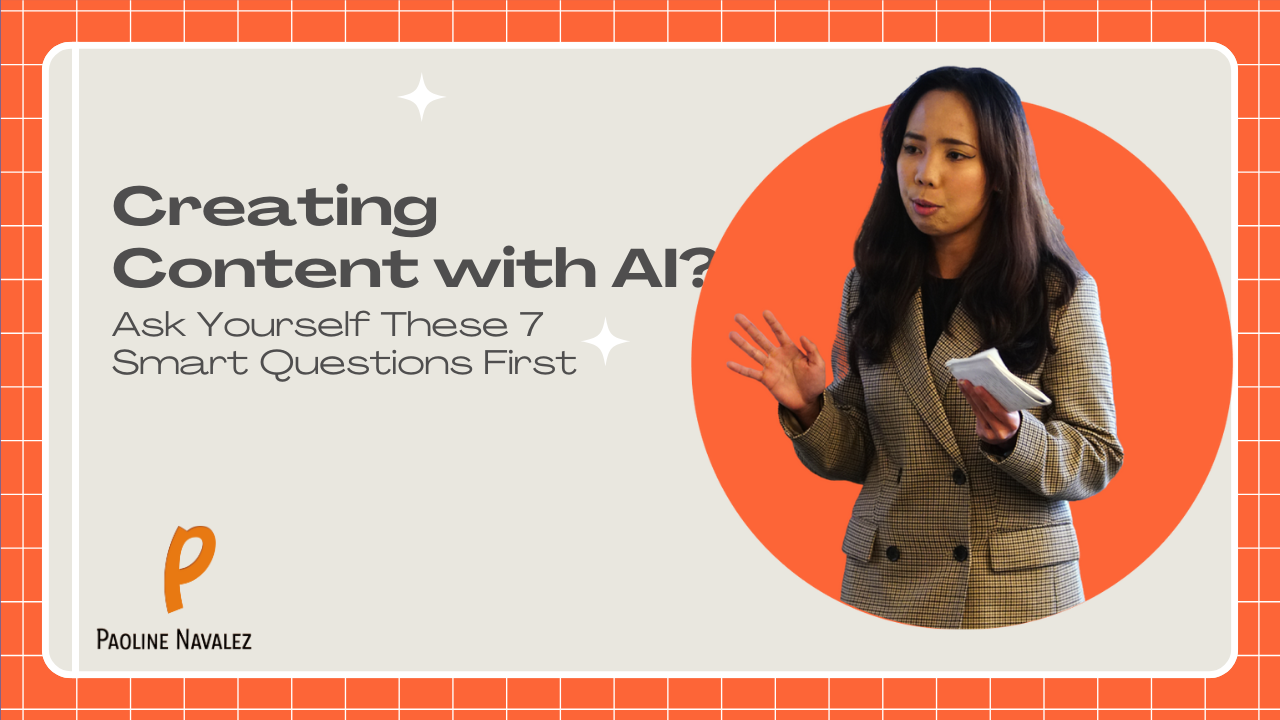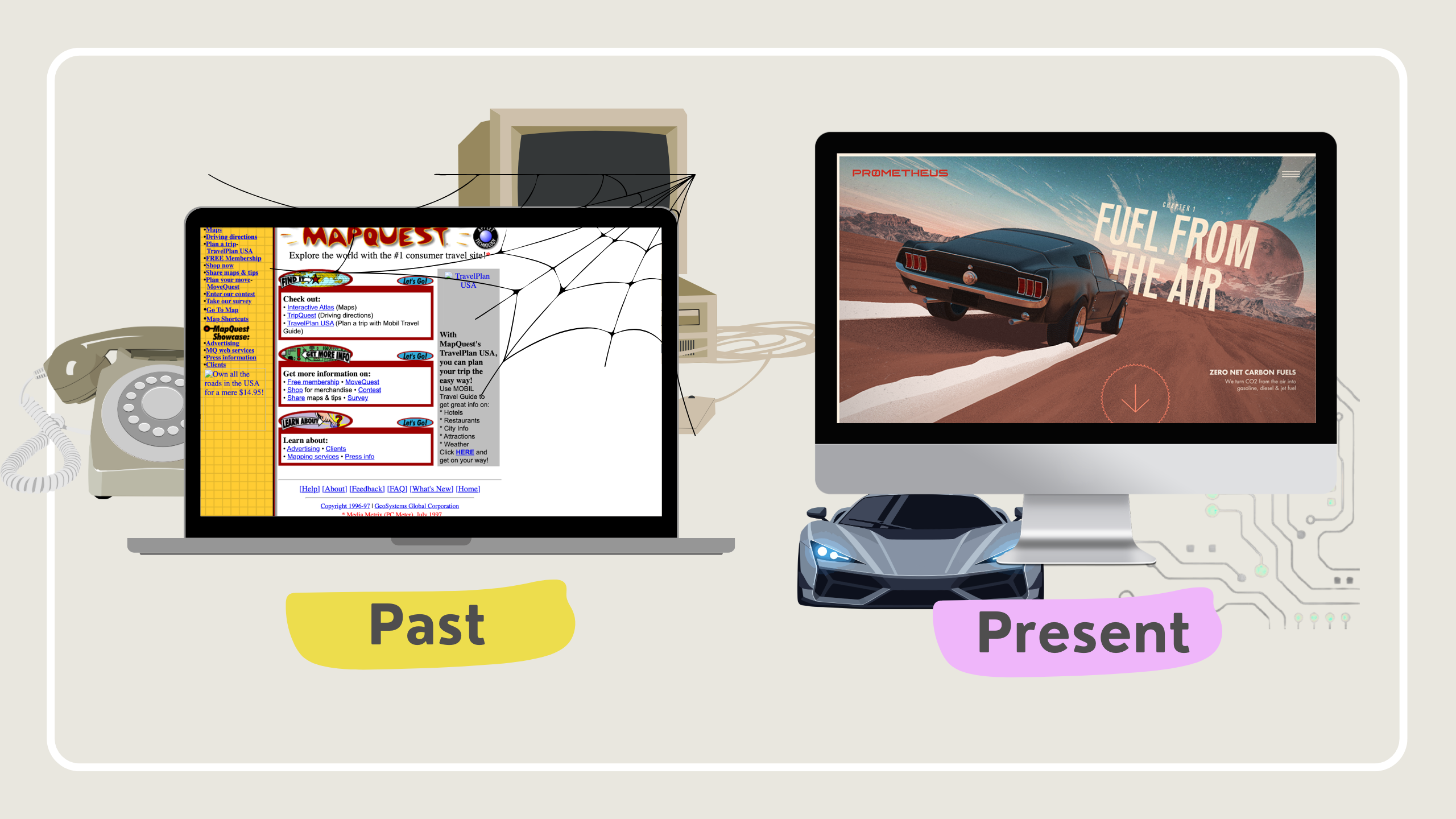
I was born in 1997. Back then, websites were glorified digital brochures.
Remember those? One-pagers that looked like flyers slapped onto the internet. Static. Overstuffed. Visually chaotic.
Fast forward to 2025, and the transformation is astonishing. With spatial audio, WebAR, and seamless animations, websites now feel. They move, respond, and speak. Brands like Apple use 3D models and interactive elements to create immersive experiences—where scrolling feels more like storytelling than site navigation.
Although there is a catch: People scroll faster now. Competition is a lot more intense. AND Attention just keeps getting shorter and shorter. A Chartbeat study even found 55% of visitors spend under 15 seconds on a web page.
STILL, there are many sites that still read like a brag sheet—features, jargon, “look how great we are”—Chances are you’ve already lost your audience. Especially if you’re still leading with your company’s history from 1997.
Because your website isn’t about you. It’s about them. A story is what keeps people on the page.
Why Story Works Better Than Features
Now think of a website you actually remember. Why does it stick with you? Because it gave you something memorable. Maybe it was the animation, the graphics, the colors or the copywriting..
Now let’s flip it. Imagine giving visitors a list of features and jargon. They won’t sit there trying to organize it. They’ll just click away. Because as much as we want to make it logical, what gets the attention first is emotion.
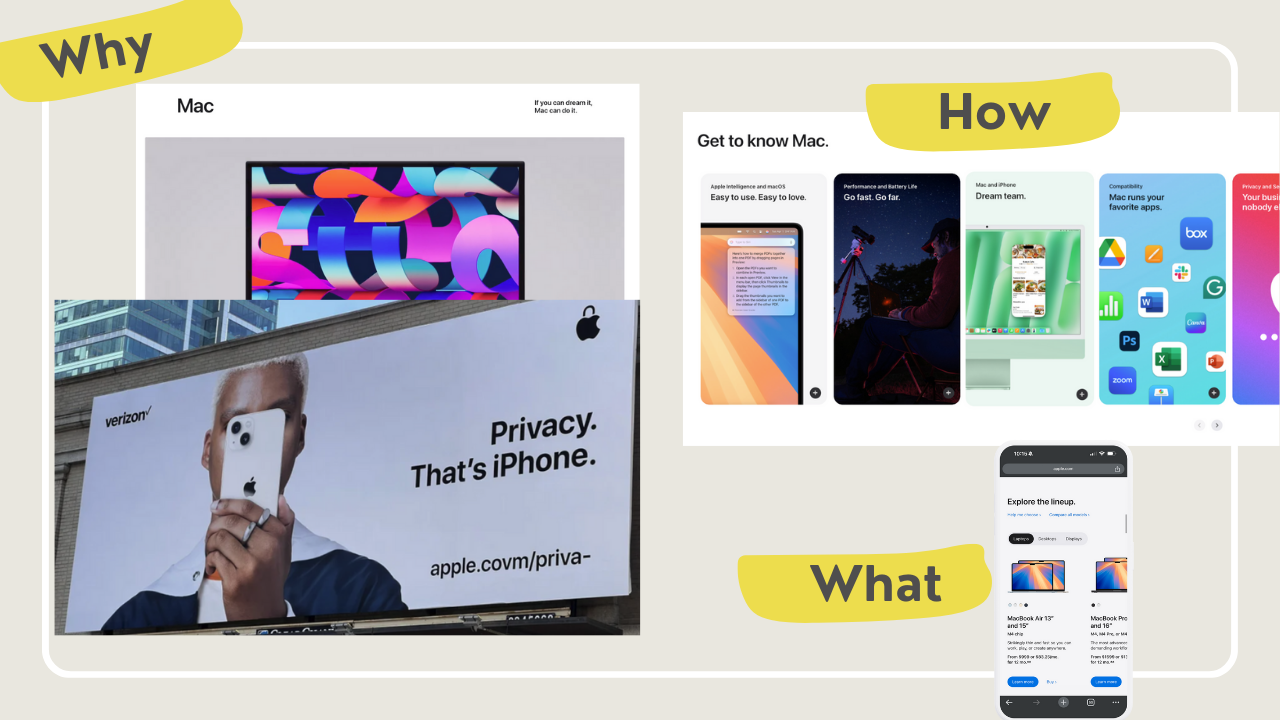
That’s where a story changes everything.
As Donald Miller says:
“Story is a sense-making device. It identifies an ambition, defines the obstacles, and provides a plan to overcome them.”
When you frame your site like a story, you stop shouting. You start guiding.
And it doesn’t have to be just words. Visuals, videos, and interactions all carry the story too.
3 Websites That Nail Visual Storytelling
Different industries. Same principle. Here’s how it’s done:
1. OSOS Creative Studio
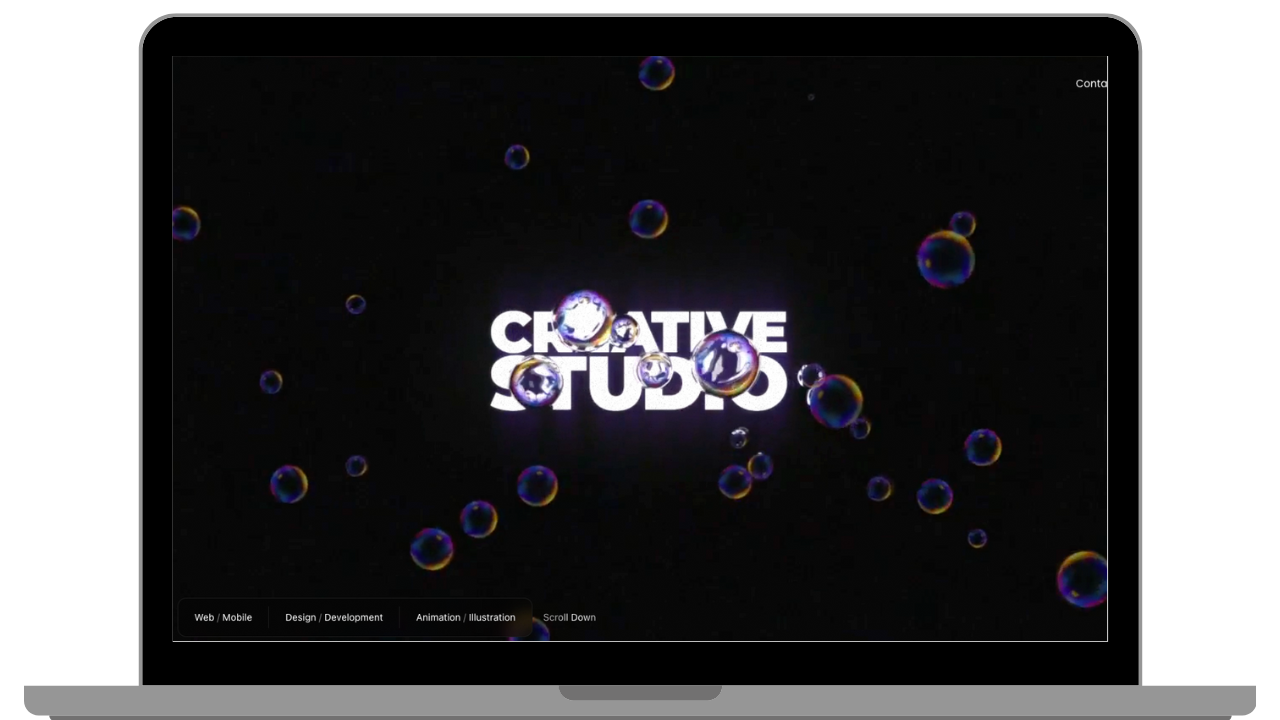
Minimal but bold. The dark background makes visuals pop and it’s not just a design choice, it signals edge, quality, professionalism.
They’re outcome-driven, not just features. Copy points back to client results.
I notice that it's also confidently short. It works that way. They don’t oversell because they don’t need to.
This is what design confidence looks like in websites.
2. Walrus
.png)
In the first five seconds, you feel it: personality. Front and center. It feels human, not too Tech-corporate.
The flow is clean and easy to digest. No jargon overwhelm, surprisingly.
Mobile experience is also a spot on. The story translates seamlessly to small screens.
Even complex tech can feel simple—if the story leads.
3. Bending Spoons
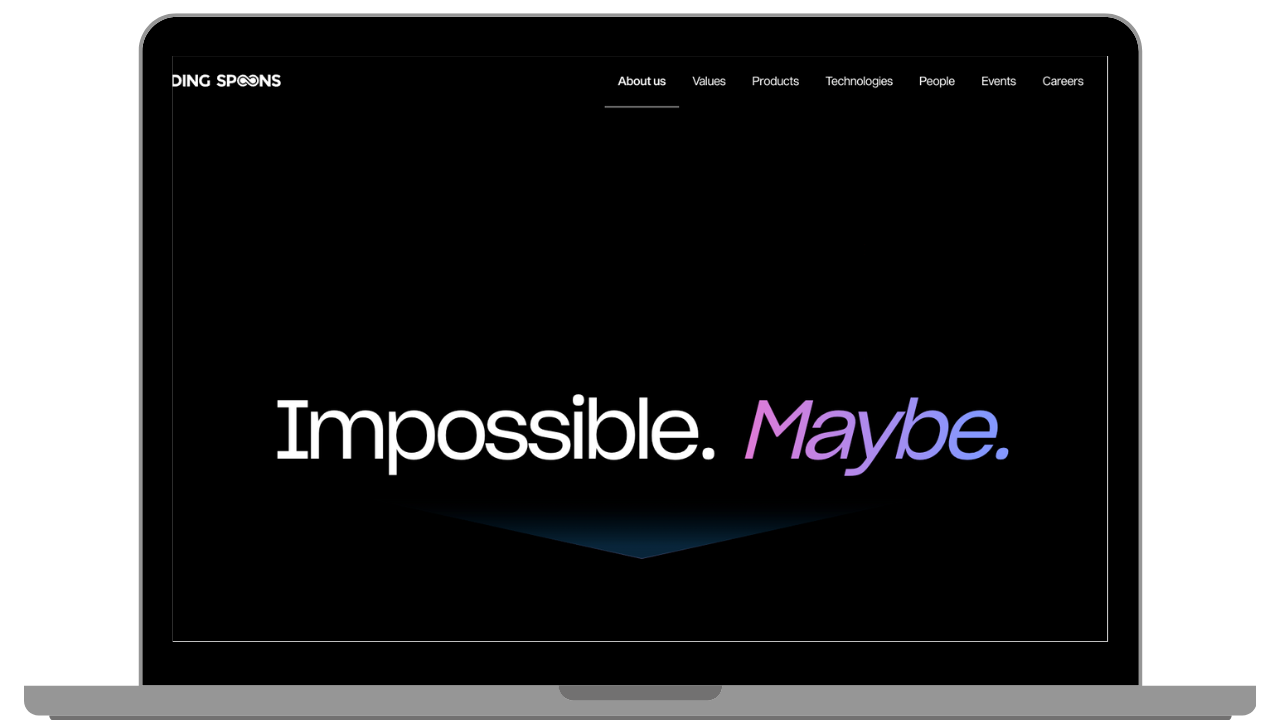
“Impossible? Maybe.” Two words that stop you in your tracks. That’s powerful copywriting, isn't it?
They're People-focused. The site shows faces and culture and company values which humanize the company(and research shows faces build trust of course except stock images).
Bright and clear. Easy navigation. Their story is about talent, and it shows.
This one’s the standout—a mix of intrigue, emotion, and clarity.
So, What About Websites in B2B?
Don’t underestimate emotion in business.
What makes a brand stick isn’t features or price. It’s how it makes people feel.
I get it. You want to look professional. It’s business, right? But who are you really talking to? People. Marketers, decision makers, team leads. Humans with problems, goals, and pain points.
When a website tells a story—through visuals, copy, or even two sharp words—you connect. People stay. And when they stay, they’re more inclined to act.
Actionable Steps to Apply This to Your Website
Here are 3 things you can do right now:
1. Define your story arc.
- Who’s the hero? (Hint: it’s your customer, not you.)
- What’s their ambition?
- What obstacles are in the way?
- How does your brand guide them?
2. Show, don’t just tell.
- Use visuals—videos, animations, infographics—to make people feel the story.
- Film your team. Show how you work. Humanize your business.
- Tools like Webflow interactions or Lottie animations make this easy without heavy dev work.
3. Cut the noise.
- Swap jargon for plain language.
- Use fewer words, but stronger ones.
- Test readability with tools or even better, ask a friend to read it.
Final Thought
You don’t need to be a copywriting genius to make your website compelling. You are human and capable of understanding context. When you have the context, all you have to do is care, and show how you can help them. Be genuine in crafting your story.
When you…
- Organize your message around a human-first story
- Support it with visuals that create emotion
- Lead visitors clearly toward action
…you create a website that doesn’t just work. It resonates.
Let’s make yours unforgettable. Whether you're rethinking your site or just have questions—I'm always up for a conversation.
